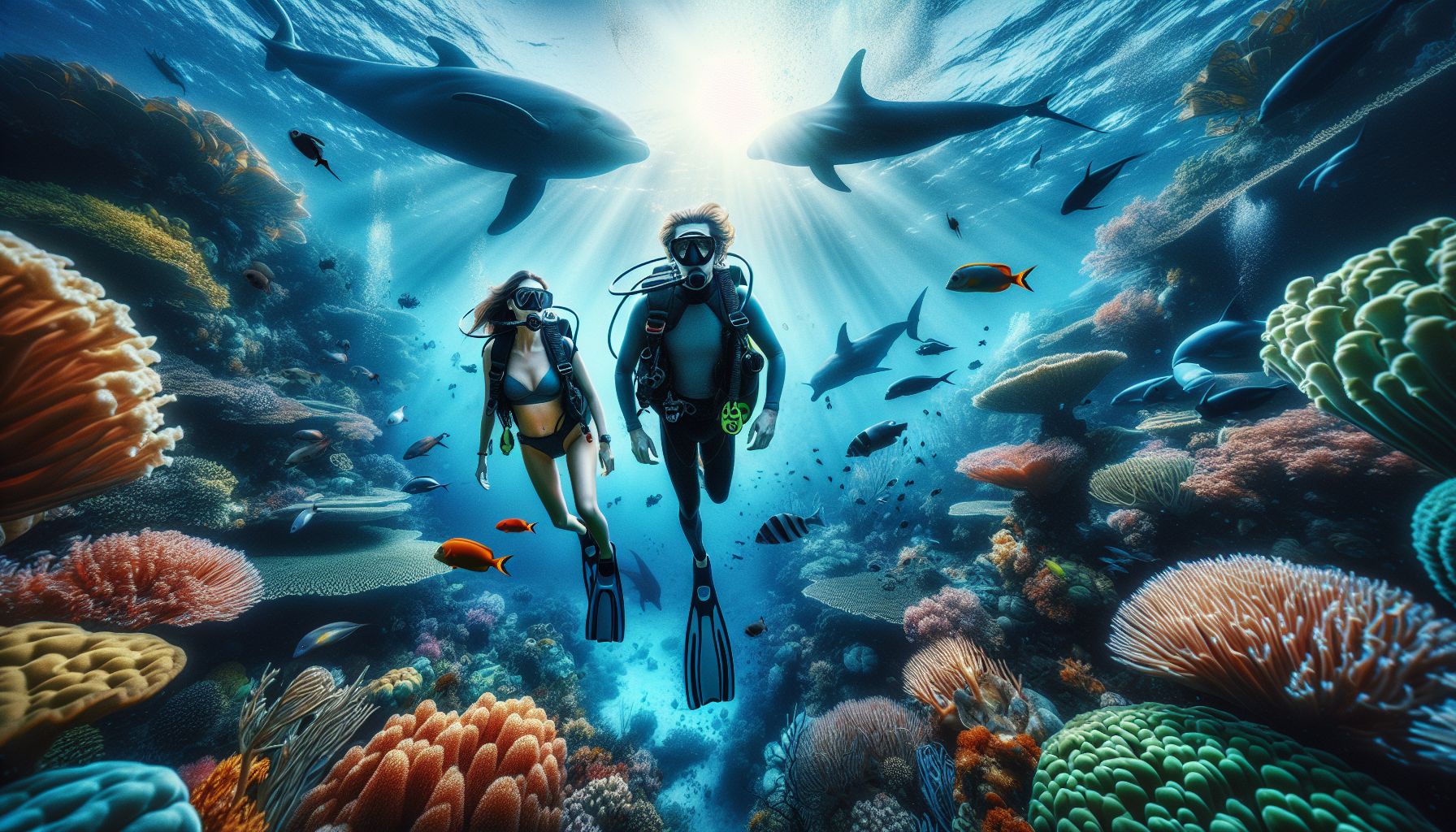Scuba diving is more than just a recreational activity; it’s a journey into a world vastly different from our own, a serene universe teeming with life, color, and mystery. For those who have embraced the allure of the deep blue, scuba diving presents an unparalleled opportunity to explore the Earth’s final frontier: the ocean. This article will immerse you in the captivating realm of scuba diving, from its basics and essential gear to the spectacular ecosystems you can encounter and the importance of conservation efforts protecting these underwater wonders.
The Basics of Scuba Diving
Scuba diving is an activity that allows people to breathe underwater using a self-contained underwater breathing apparatus (SCUBA). The term ‘scuba’ is an acronym for Self-Contained Underwater Breathing Apparatus, reflecting the independence it provides divers from surface air supplies. This underwater adventure begins with essential training and certification, typically through recognized organizations such as PADI (Professional Association of Diving Instructors) or NAUI (National Association of Underwater Instructors).
Getting Certified
Before venturing into the depths, aspiring divers must undergo a certification process that includes both theoretical and practical components. The course educates individuals on diving techniques, safety procedures, and underwater communication. Key concepts include:
- Understanding pressure and how it affects the body (the bends, ear equalization)
- Mastering buoyancy control
- Learning about dive equipment and its maintenance
After completing the course and passing the final tests, divers receive a certification card indicating their level of training and the depths to which they are qualified to dive.
Essential Diving Gear
Scuba diving equipment is what equips divers to explore underwater safely. The fundamental gear includes:
- Diving Mask: Provides a clear vision underwater.
- Snorkel: Allows breathing at the surface without lifting the head from the water.
- Scuba Tank: Contains compressed air or a mix of gases for breathing.
- Regulator: Connects to the tank, reducing the air pressure to a breathable level as it’s delivered to the diver.
- Buoyancy Control Device (BCD): A jacket that inflates or deflates to control buoyancy.
- Dive Computer: Monitors dive time, depth, and ascent rate to keep divers within safety limits.
- Fins: Facilitate propulsion and maneuvering underwater.
- Wetsuit/Drysuit: Provides thermal protection and defense against environmental hazards.
Exploring The Underwater Ecosystems
Scuba diving gives individuals access to an astounding variety of ecosystems, each with their unique characteristics and inhabitants:
Coral Reefs
Coral reefs, often known as the “rainforests of the sea,” are vibrant havens for marine life. They house countless species of fish, invertebrates, and plants. Locations like the Great Barrier Reef in Australia and the Coral Triangle in Southeast Asia are hotspots for divers looking to experience these biodiverse environments.
Shipwrecks
Shipwrecks create artificial reefs that attract an abundance of sea life. Sites such as the SS Thistlegorm in the Red Sea and the USS Oriskany off Florida’s coast are famous for their historical significance and marine ecosystems.
Caves and Caverns
The enigma of submerged caves and caverns draws divers to explore their hidden chambers. Cave diving requires specialized training due to the increased risks involved. Systems like Mexico’s Cenotes and Florida’s Springs offer unique geological formations and crystal-clear waters.
Kelp Forests
Kelp forests, with their towering underwater structures, offer a unique diving experience reminiscent of exploring an undersea woodland. The ecosystems of places like California’s Channel Islands or South Africa’s False Bay teem with marine life, including sea otters, seals, and a variety of fish.
Ice Diving
For the truly adventurous, ice diving in frozen lakes or seas presents an otherworldly scene. The surface ice conceals a surprisingly active aquatic landscape below, visible through a dive hole. Diving under ice requires special procedures and safety measures, given the extreme conditions and overhead environment.
Conservation and the Role of Scuba Divers
As ambassadors to the underwater world, scuba divers play a critical role in marine conservation. Organizations such as Project AWARE (Aquatic World Awareness, Responsibility, and Education) partner with divers to combat threats to aquatic ecosystems through initiatives like Dive Against Debris, which focuses on underwater cleanups, and Adopt a Dive Site, encouraging ongoing stewardship of local dive spots.
Threats to Marine Life
The marine environment faces numerous threats, including:
- Coral Bleaching: Caused by climate change, leading to the loss of algae that corals depend on, resulting in their whitening and potential death.
- Overfishing: Depletes fish populations and disrupts the balance of marine ecosystems.
- Pollution: Plastics and other waste harm aquatic creatures and their habitats.
- Destruction of Habitats: Coastal development and irresponsible tourism practices destroy crucial areas like mangroves, seagrasses, and reefs.
How Divers Can Help
Scuba divers contribute to ocean preservation in several ways:
- Practicing Responsible Diving: Avoiding contact with marine life and being mindful of buoyancy to protect the underwater environment.
- Participating in Citizen Science: Collecting data on marine populations and health during dives.
- Education and Advocacy: Informing others about marine issues and supporting conservation-oriented policies and practices.
Conclusion
Scuba diving offers a portal to a realm that few get to experience firsthand. It allows individuals to encounter diverse ecosystems rich with life and to play an active role in conserving these precious environments. By understanding scuba diving basics, respecting underwater life, and advocating for the ocean’s health, divers become protectors of the world’s most mysterious and vital resource.
Sources
- PADI – www.padi.com
- Project AWARE – www.projectaware.org
- NAUI – www.naui.org
Whether one is marveling at the majesty of a coral reef, exploring the silent halls of wrecks, or floating in the stillness of kelp forests, scuba diving serves as a reminder of our connection to the natural world and the responsibility we have to preserve it for future generations. As we dive deeper, let us remember that each breath underwater is a privilege and a call to protect the endless blue that covers our planet.
